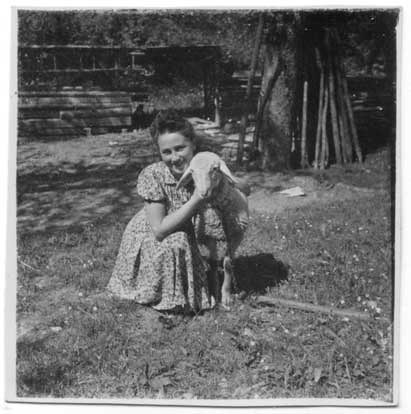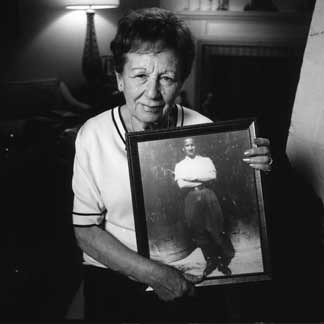
February 2, 2011
Memoirs of a Hungarian resister
BY JONATHAN KIRSCH
Every self-published author thinks he or she has something important to say. It’s rare that the reader agrees, I’m afraid, and rarer still when history or literature is enriched by the author’s effort.
I am happy to report that none of these cautions apply to “Rebel With a Cause: The Amazing True Stories of an Urban Partisan in WWII” by Andrew E. Stevens in collaboration with Meir Doron. (See below for ordering information.)
Like other survivors of the Holocaust, Andrew Stevens managed to find a safe refuge in America after the war. The Beverly Hills businessman, whose name back in Hungary was Steinberger Endre — the family name was given first in Hungarian usage — has been active in Jewish philanthropies, including the sponsorship of monuments to the victims of Nazi genocide, but he has remained mostly silent about his own exploits until now.
With the publication of “Rebel With a Cause,” Stevens is finally telling his own remarkable tale of resistance against Nazi Germany and its Hungarian collaborators.
“I haven’t put my story into writing for 66 years because I did not want to deal with the question that has been troubling my mind ever since: ‘Why did they go to their deaths like sheep to the slaughter?’ ” he explains to the reader. “Why wasn’t the Shoah more of a battle?” Now in his late 80s, “at peace with the knowledge that I will soon leave this world,” Stevens feels “called upon to put everything into writing so that future generations will truly ‘never forget.’ ”
The ordeal of Hungarian Jewry is especially heartbreaking because it came at a time when reports of what was happening in the death camps and the killing fields had already reached the West. “During the first years of World War II, we lived in a fool’s paradise in Budapest,” he recalls. “We were buying time and ignored the time bomb ticking in our ears.” Only in 1944 did the Nazis finally turn their deadly attentions to Hungary.
Stevens tells his tale in a parallel narrative consisting of recollections of his return visit to Hungary long after the war and flashbacks to the terrible times when he was “a fugitive in [his] own city,” struggling to avoid the fate that befell so many of his fellow Jews and surviving on physical courage and sheer chutzpah. He managed to escape from the labor battalion in which he was forced to serve, tore off the yellow stripe that identified him as a Jew and searched out the Zionist underground that was finding a way out of Hungary for a precious remnant of the Jewish community.
“This was the moment that defined my own purpose in this terrible war,” Stevens writes. “In the middle of the ongoing catastrophe, I experienced a moment of joy, and finally felt that I had power over my own life.”
Stevens adopted a new identity as a Christian — he donned an eye patch and a bloodstained bandage in order to feign battle injuries as a “wounded war hero” — and undertook a new job as a forger and smuggler of documents. “Each of these documents can save the life of yet another Jew!” he was told by his comrades. Some of these forgeries are reproduced in the book along with photographs of the handsome young man who created them — an archive of documentary evidence and, at the same time, a thrilling war story, full of intrigue and suspense, including a daring escape under fire from the Hungarian fascists who aided the German army of occupation in finding and killing Jews.
Stevens’ testimony includes firsthand glimpses of some famous historical figures, including Hannah Senesh and Raoul Wallenberg. When Stevens asked why he had been chosen to carry documents from the forgery workshops to Wallenberg, he was told: “You and him, both of you are fearless.” Yet Stevens confesses that he is still haunted by memories of the atrocities that he witnessed while making his way through the streets of occupied Budapest, and he has not yet found an answer to his agonized question about the apparent passivity of so many victims of the Holocaust.
“They sneak up on me without warning,” he writes of those memories and those questions, “most of all at night and in my dreams, but also during daylight hours, when I sit down with my family for dinner or spend time with my children, in the middle of a Rotary meeting, or at the height of business negotiations.”
The book that Andrew Stevens has written and published can be approached as an intimate family memoir, as the eyewitness testimony of a Jewish partisan, and as the courageous act of a man who has chosen to confront his own demons. For all of these reasons, “Rebel With a Cause” is one self-published book whose author has earned the right to put his own words into print.
Copies of “Rebel With a Cause” by Andrew E. Stevens in an e-book edition can be ordered from Amazon.com at $9.99 per copy. Hardcover copies can be ordered directly from the author through the following e-mail address: rebelwithacause.as@gmail.com.
Jonathan Kirsch, author and publishing attorney, is the book editor of The Jewish Journal. He blogs on books at www.jewishjournal.com/twelvetwelve and can be reached at books@jewishjournal.com.
© Copyright 2011 Tribe Media Corp.
All rights reserved. JewishJournal.com is hosted by Nexcess.net. Homepage design by Koret Communications.
Widgets by Mijits. Site construction by Hop Studios.
http://www.jewishjournal.com/ twelve_twelve/article/memoirs_of_a_hungarian_resister_20110202/
Share
 The most inspiring essays in the 8th to 9th grade level and the 10th-12th grade level will win the writer (and his/her teacher!) an iPod Touch, preloaded with all of JPEF’s short films. Essays must be submitted via the JPEF website by May 17, 2011.
The most inspiring essays in the 8th to 9th grade level and the 10th-12th grade level will win the writer (and his/her teacher!) an iPod Touch, preloaded with all of JPEF’s short films. Essays must be submitted via the JPEF website by May 17, 2011.



































